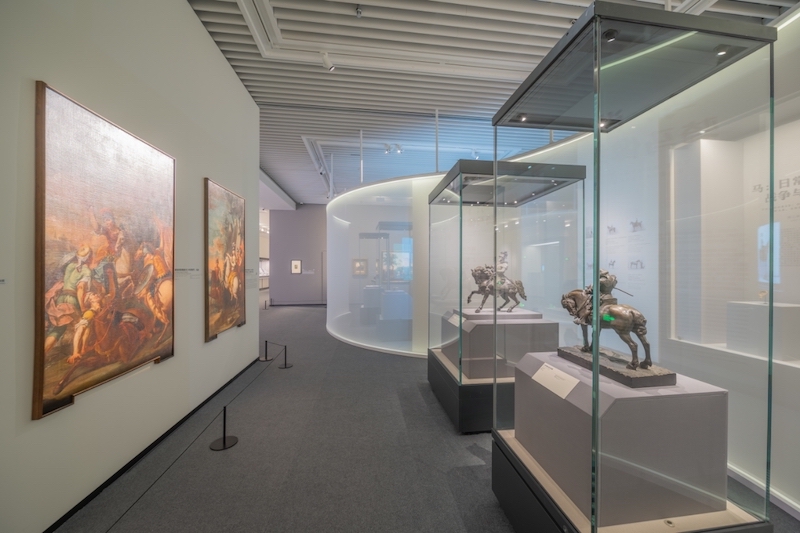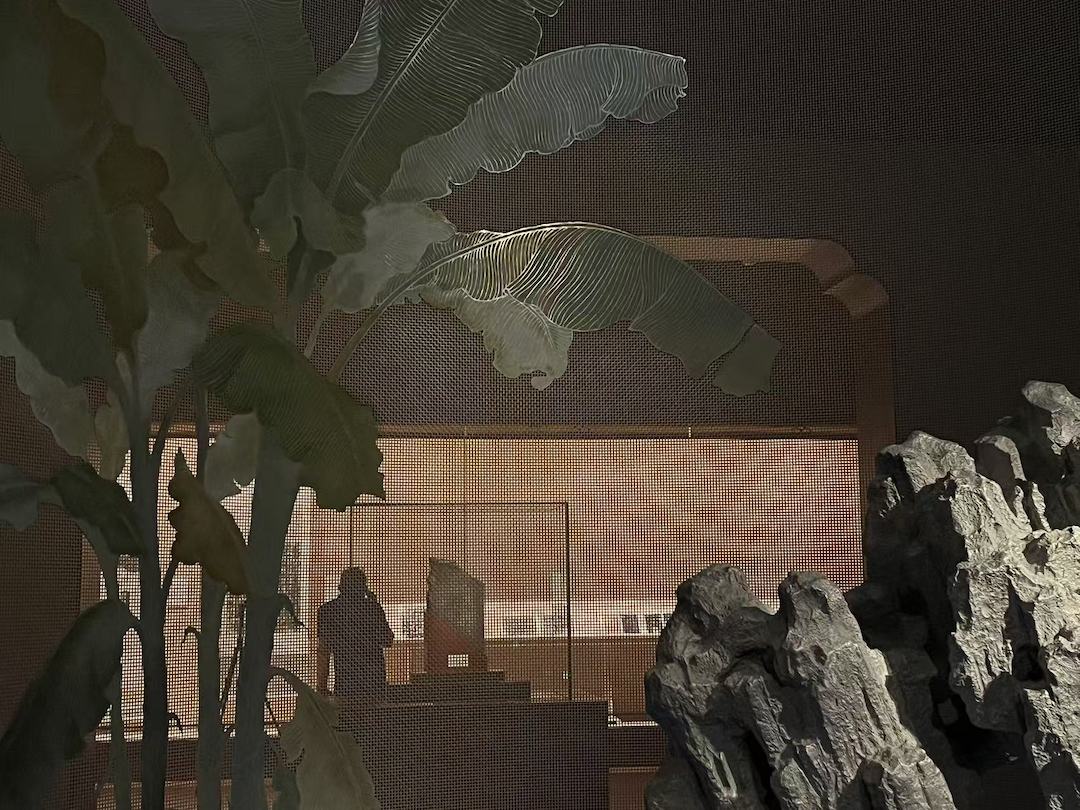
Located on the banks of the Grand Canal in Wuzhong District, Suzhou, the Wu Culture Museum, also known as the Wuzhong Museum, is a local museum that has been established for three years.
Since its opening, the Wu Culture Museum has been extremely active. In addition to the series of exhibitions focusing on Wu culture, the venue has also launched overseas exhibitions such as "Exhibition of Ancient Cultural Relics from the Eurasian Continent", "Exhibition of Etruscan Civilization", "Three Kingdoms" " "Yungang" and other themed exhibitions of Chinese culture, as well as modern exhibitions combining contemporary art, as well as multi-theme and types of lectures, public education, drama club activities, etc.
Chen Zenglu, curator of the Wu Culture Museum, recently accepted an exclusive interview with The Paper, explaining how local museums explore local context and create their own characteristics. "'Characteristic' is a stepping stone. The museum is not only a space for exhibitions, but also a space for activities. We hope to turn the museum into a platform for all kinds of capable and powerful teams to use our space and resources to enrich this world. space to hold more colorful activities.” Chen Zenglu said.
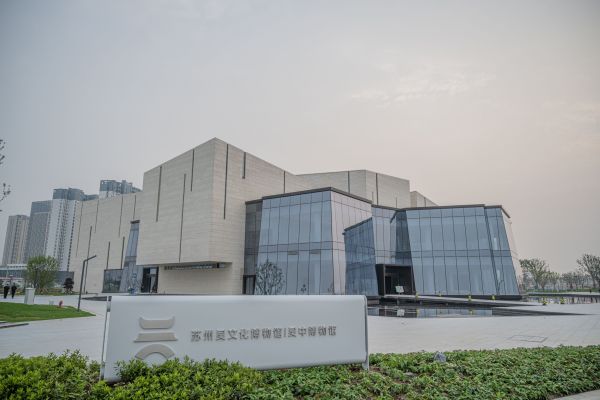
Exterior view of Wu Culture Museum

Exterior view of Wu Culture Museum
In June 2020, in Wuzhong District, Suzhou, beside the Tantai Lake Scenic Area, on the southwest side of the world cultural heritage site of Baodai Bridge on the Grand Canal, a new museum, the Wu Culture Museum, opened.
This is a local museum that comprehensively displays the cultural characteristics of Wu through various forms such as text, objects, and images. materials, to connect the history of Wudi, Wuzhong, and even Jiangnan, and the latter is Wu culture in a broad sense, showing the inheritance from the Spring and Autumn and Warring States to the Ming and Qing Dynasties, from customs, human feelings, geography to Yasong, and telling the story of Wu culture in Changes and developments in historical stages.

Interior view of Wu Culture Museum

Interior view of Wu Culture Museum
In addition to displaying the permanent exhibition of Wudi, it also held a series of exhibitions of Wudi's intangible cultural heritage projects, held special themed exhibitions such as "Three Kingdoms" and "Yungang", as well as "Exhibition of Ancient Cultural Relics from the Eurasian Continent" and "Yitru Asian Civilization Exhibition" and other overseas exhibitions. In addition to exhibitions, the venue also holds 70 to 80 lectures and salons every year, and the frequency of related academic activities is not inferior to provincial venues. At the same time, it is also a place that is always "open", where audiences can listen to classical music, watch dances, watch drama rehearsals, etc. at night.
In the three years since its opening, the Wu Culture Museum can be said to be the most active district and county-level museum.

Chen Zenglu, Director of Wu Culture Museum
Dialogue|Chen Zenglu, Director of Wu Culture Museum
The Paper: In some previous interviews, you talked about the trend of homogenization of many museums. In this regard, you emphasized that local museums should have their own characteristics, so as to become a window for the spread of local culture. In this regard, can you talk about the preparation of the Wu Culture Museum, and how the museum shaped its own museum characteristics around the cultural context of Wuzhong, Suzhou and Jiangnan?
Chen Zenglu: This is a question that many audiences, including professionals, have been discussing. The museum is actually a product of learning from the West, and its operating model is largely based on learning from advanced counterparts, so there will inevitably be convergence in the model. In essence, small and medium-sized pavilions are a replica of the model of large pavilions. At the beginning of the opening, we have positioned the Wu Culture Museum as a "high-level, distinctive cultural complex", and one of the core items is "distinctive".
Where does this feature come from? I think it is a study of the positioning of the museum. Simply put, "positioning" is actually the intersection of society's needs and our own resources. At the beginning of the establishment of the museum, we did a lot of research on the local residents (potential audiences), and also sorted out our collections. After a comprehensive balance from several aspects, the characteristics will emerge. The collection of the Wu Culture Museum itself is a collection of cultural relics from Wuzhong, Suzhou, so it is a collection of Jiangnan culture. Therefore, our characteristics should focus on the culture of Jiangnan and the culture of Wu. At the same time, local residents and the government also hope that we will become a propaganda center for local culture. We have been adhering to this feature in the three years since we opened.
Of course, our specialty is not just Jiangnan. When we are developing the entire exhibition system, we also pay attention to how to display the regional cultures from Jiangnan to various parts of China, and then to our larger circle of Eurasian civilization. Therefore, we are not sticking to Jiangnan, but use Jiangnan culture as a starting point to understand a larger and different culture, or look at Jiangnan from another perspective of other cultures. Of course, the word characteristic is not called out, but made. We have nearly 10 solo exhibitions every year, two of which focus on Jiangnan culture, which will naturally form a brand.
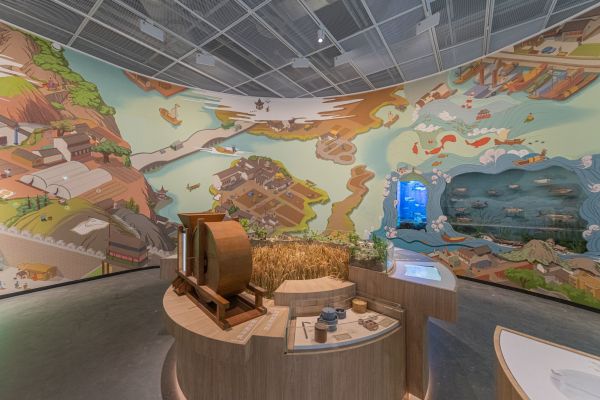
Permanent Exhibition Hall of Wu Culture Museum

Exhibition site of "Classics and Paradigms - Pingcheng Strength and Yungang Era" at Wu Cultural Museum

Exhibition site of "Classics and Paradigms - Pingcheng Strength and Yungang Era" at Wu Cultural Museum
The Paper: What were the results of the initial research when the museum was established? What are your insights?
Chen Zenglu: I took the lead in writing the outline of the Wu Culture Museum. The outline is like a general script. If you regard cultural relics as actors, different actors can play different plays. The key lies in how to organize the play. We conducted interviews and questionnaires with local audiences, including scholars, to understand what they wanted this museum to be like. In fact, different people will have different reactions. We focus on the expectations of audiences of different groups, different ages, and different backgrounds. This was very important for us to set a baseline for the museum script.
The conclusion of the survey is that local audiences prefer to come to us to see the presentation of Wudi culture and Jiangnan culture. This is basically in line with our expectations. At the same time, many viewers will also mention that they do not want this to be a pile of cultural relics in the traditional sense. This also gives us a lot of hints, hoping to present Jiangnan culture in a contemporary aesthetic visual environment. So when you walk into our museum, you will find that the entire atmosphere is different from traditional museums.
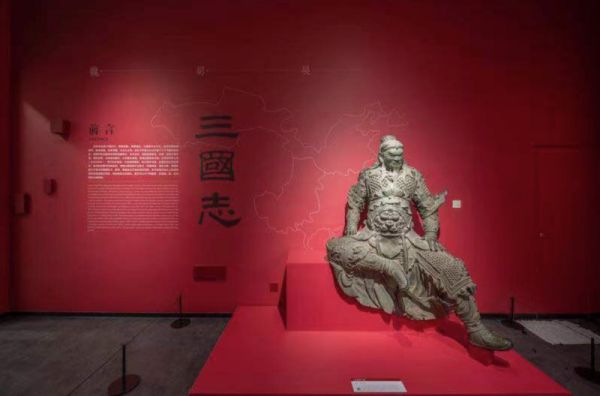
Special Exhibition of the Three Kingdoms

The garden landscape in the special exhibition of "Wumen My Scenery"
The Paper: Since its opening, the Wu Culture Museum has held a number of intangible cultural heritage exhibitions of Jiangnan culture, as well as related theme exhibitions. Can you talk about how you explored and sorted out the theme of "Jiangnan"?
Chen Zenglu: In Suzhou, the most difficult exhibition to do, or the exhibition that requires the most control of quantity, is the exhibition related to Jiangnan culture. People in Jiangnan are the most familiar with Jiangnan culture. The problem is the same elsewhere. Then we must face two challenges: the first is how to make a different, refined and improved exhibition; the second is how to attract more people into the exhibition hall. Therefore, we emphasize that when organizing Jiangnan cultural exhibitions, we must control quantity and create high-quality exhibitions in terms of quality. This is also a big subject.
There are many immovable cultural relics resources in the Jiangnan area, namely so-called ancient buildings and ancient residences. These things cannot be put in the exhibition hall, so we made a digital exhibition of Wuxian cultural relics, using digital technology to bring in things that could not be moved in the exhibition hall, and gave them different story clues. This exhibition is different from ordinary exhibitions about Jiangnan culture. Its presentation method is different, the objects presented are different, and the experience process is different.
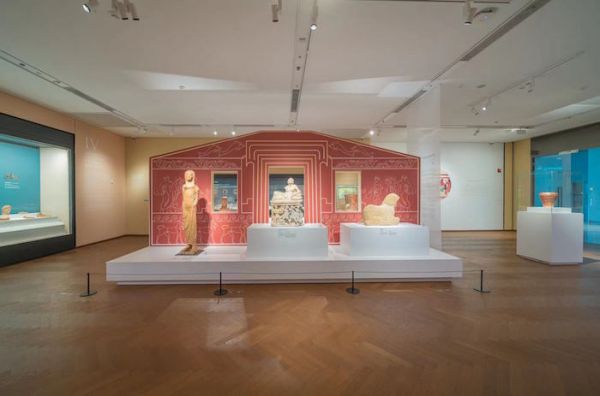
"Etruscans" Special Exhibition
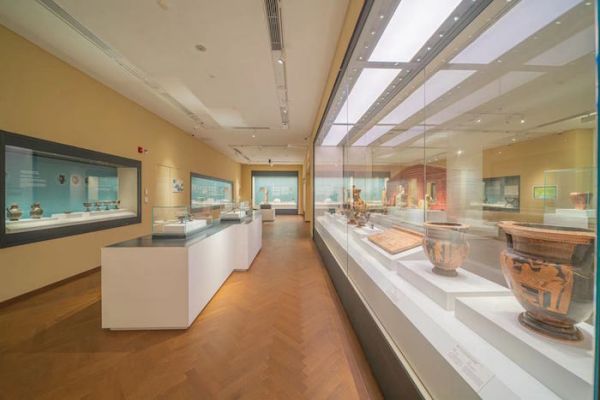
"Etruscans" Special Exhibition
The Paper: In addition to the display about Jiangnan, what is the strategy of the Wu Cultural Museum’s other special exhibitions? Has the exhibition planning been adjusted in the past three years?
Chen Zenglu: We had very complete goals when we built the museum. Our exhibition has three circles: the core is the characteristics, that is, the display of Jiangnan culture and Wu culture; the larger circle is the regional civilization of various places in China, including the Shanxi mural exhibition we presented before, the Three Kingdoms theme exhibition, the recent The Yungang theme exhibition, etc., we will also hold a series of exhibitions directly related to regional culture; the third level is overseas cooperation exhibitions. Suzhou, where the Wu Culture Museum is located, is an international city with a huge population and the highest GDP in the country, so the public's demand for culture must be international. We have previously held the Eurasian Civilization Exhibition and the Italian Etruscan Civilization Exhibition. This year, we will cooperate with the National Archaeological Museum of Naples, Italy to hold the Pompeii Murals and Sculpture Exhibition. After that, we will hold a "horse" as a clue An exhibition about the evolution of civilizations in Eurasia.
Another thing to say is that when the museum first opened, we mostly introduced progress and enjoyed the research results of other exhibition halls. After that, we gradually turned to curating exhibitions ourselves. We hope to use our research to embed our will throughout it, so as to drive the team’s curatorial capabilities and team building. This is a systematic project, from exhibitions to public services to the development of core competitiveness.
It is difficult for an organization to reflect its original intention and purpose with a single exhibition, which is why we have to build an exhibition system. After it becomes a system, we can connect various exhibitions in a few years and see the big picture of the museum. This big picture is the intersection of several curves, including the museum’s ambitions, the museum’s overall research, and the public’s expectations of the museum.
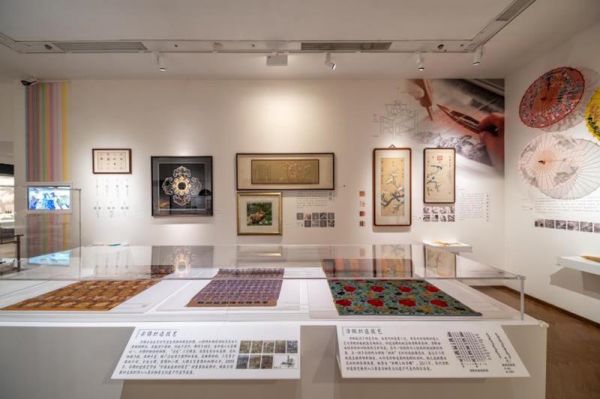
"In Paradise" Special Exhibition
The Paper: What is the staff structure of the Wu Cultural Museum?
Chen Zenglu: Our team is not big, with only 20 employees within the establishment and about 20 outside the establishment, for a total of about 40 people. We are a very young team, including many young people who have graduated from archeology, cultural heritage and media fields.
We need to play to our strengths. The advantage of a small restaurant is that it is flexible and versatile, which is related to the age and size of the team. And Tai Kwun has a huge staff, so it would be more difficult to turn around and do one thing immediately. So I think that there are more than 6,000 museums in the country. If the enthusiasm of small and medium-sized museums everywhere is mobilized, it will be very helpful to our industry.
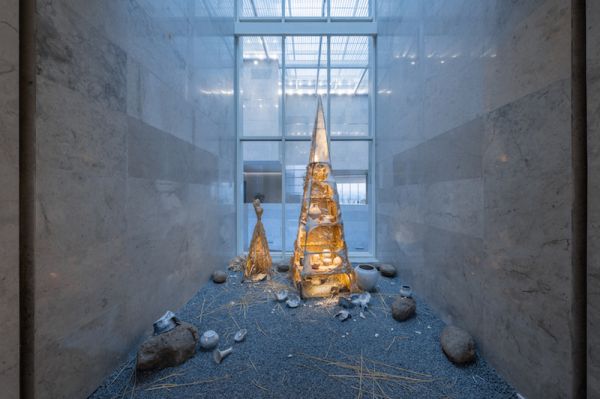
"Four Two Thousand Categories: Duo Exhibition of Liang Shaoji and Yang Jiechang"
The Paper: The Wu Culture Museum has held a number of joint activities with other local museums. Can you tell us how the Wu Culture Museum is linked with other local museums in the south of the Yangtze River?
Chen Zenglu: I think small restaurants need cooperation. The advantages of small and medium-sized libraries are the flexibility mentioned just now, but the disadvantage is that it is difficult to do penetrating work on their own. It will be more beneficial if everyone can leverage their respective strengths. For example, we have recently cooperated with several museums in Hangzhou and Suzhou to hold an exhibition on Suzhou-Hangzhou Paradise Crafts. This exhibition comprehensively displays ancient and contemporary handicrafts. This exhibition is now traveling to Hangzhou and will later travel to other areas in Jiangnan. This is the common cooperation, research and development of new content. Of course, cooperation considerations between venues must produce local content.

The ancestral hall of the Huang family in Wudi

Overlook of Luzhi Ancient Town in Suzhou
The Paper: When it comes to the local area, the official account of the Wu Culture Museum has been regularly posting articles about the local context. For example, the project "Treating Steles and Biography" starts from the local ancient trees to sort out the local context.
Chen Zenglu: The planning of “Erecting a Monument and Setting a Biography” is our research, sorting and interpretation of our hometown. The original intention of the "Tree Monuments and Biography" project is to sort out all aspects of the 100 ancient trees in our area, so as to achieve a unique presentation of local culture. During the investigation of the digital culture exhibition in Wu County, we found that there are many ancient trees in the ancient village, and these ancient trees are the coordinates of the entire village. They are the cultural accumulation and origin earlier than people and villages. In the future, we will also hold an exhibition of "Biography of Tree Steles". This exhibition not only presents the trees in historical paintings, but also hopes to invite contemporary artists to re-present these trees, combining nature and humanity.
In fact, the original intention of the museum should be to allow everyone to witness all aspects of the development of our civilization in such a space. Whether it is a tree or other things, it is an entry point, and this entry point can present themes and related contexts that interest the audience. Of course, the presentation must be professional and high-level.
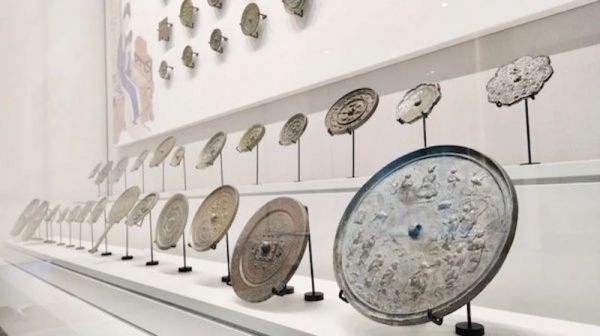
Feng Ya Song Wuzhong Exhibition Hall
The Paper: In recent years, with the country's strong support for archaeological museums and the increasing public enthusiasm for visiting museums, in your opinion, how do museums cultivate and influence audiences' cultural knowledge and aesthetic taste?
Chen Zenglu: I don’t think we can say “cultivate the audience’s aesthetics”. This is the arrogance of museums. We may know more than the public in some aspects, or receive more information, but this in itself is a necessary quality of the institution. From a curatorial point of view, an exhibition is not a more noble thing than making a movie, and no film director can say that making a movie is to cultivate the aesthetics of the audience.

Catholic activities of Wu Culture Museum
The Paper: Has the audience changed in the three years since the museum was established?
Chen Zenglu: This is a very interesting topic. The opening period of the Wu Culture Museum coincided with the new crown epidemic. We have been conducting audience surveys, and the results of the survey show that our audience structure is very good, which is the age structure that many museums dream of: 60% female audience, 40% male audience, relatively balanced. At the same time, nearly 90% of the audience are under the age of 35, and nearly 90% of the audience have a college degree or above.
Of course, on the one hand, our audience structure is problematic. This data reflects our diversity and lack of accessibility. Generally speaking, the proportion of the crowd in the museum should be the elderly, middle-aged, young people, and children. So what we will do next is to enhance the diversity of the audience and attract more people of different age groups through exhibition activities. This is a long process.
The public expects us to have more activities that are different from the annex, so we have held a large number of lectures, as well as some salon activities that a small number of professionals come to listen to. For curators, how to balance the needs of various audiences is a big challenge. In our audience structure, the proportion of non-Suzhou audiences is very high, and the arrival rate of specific audiences is very high, which in turn determines whether we have neglected local audiences. These data and the reasons behind them need further study. Sometimes, we are also very entangled in how to achieve balance in all aspects.

Catholic activities of Wu Culture Museum
The Paper: Does this mean that academic and professional activities will lead to the loss of the elderly group?
Chen Zenglu: In Chinese museums, the proportion of the elderly is not high. Visiting by special groups of people has always been a social problem facing our country. Another difference between us and provincial museums is that the proportion of tourists in our museum is very low. This also shows that the audience who visit our pavilion is very purposeful, and they come here specially for a certain exhibition. From some perspectives, we should enjoy this bonus, because these audiences can interact and resonate with the exhibits and the staff in the museum. They are not punch-in viewers in the general sense.
Today, culture fever and museum studies have become hot words. Museums should be immersive places that enhance people’s aesthetics and build their personality. But if the popularity of a library is too high, the space in the library will become crowded and it will not be suitable for research. Of course, this also shows that there are only a few truly attractive venues now, and the audience has needs and can only go to those few venues. From this perspective, museums that are of good quality and can meet the needs of the public are not enough. For example, Suzhou now has the reputation of being a city of 100 museums, but among the 100 museums, the Suzhou Museum is so popular that reservations cannot be made, and many venues have not attracted the public. We are going to think about this issue.
I think every museum should go its own way, and there are many things that don’t have answers.
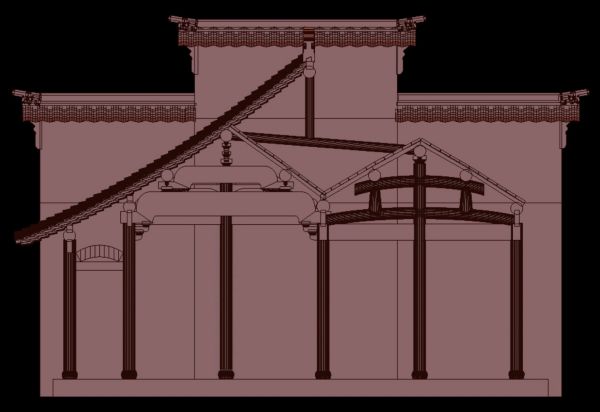
Wu County Digital Cultural Relics Exhibition Huihe Hall Three Mountains Screen Wall (model)
The Paper: In terms of public education, what are the public education features of the Wu Cultural Museum? What are your future plans?
Chen Zenglu: The core of public education at the Wu Culture Museum is the curriculum. We now have about a hundred courses, some of which are introduced in schools, and some of which are based on the courses and add special activities. We have some unique lectures and hold about 70 or 80 lectures every year. There are also traditional inheritance activities (handicraft activities related to intangible cultural inheritance), as well as poetry interpretation, music and dance activities, etc.
By facing different activities of different groups, the museum is not only a space for exhibitions, but also a space for activities. Our museum is not only operated by our own team, but also hopes to turn the museum into a platform for all kinds of capable and powerful teams to use our space and resources to enrich this space and hold more activities. Going back to the first question about "features", I think "features" is a stepping stone. The reason why we can attract so many teams to cooperate is that we have strong characteristics and good Wudi cultural resources. Through this stepping stone, we can cooperate with more teams with the most professional attitude and the most sincere spirit.

Luzhi sand table model
The Paper: From Suzhou's local digital exhibitions about ancient town buildings to many special exhibitions that use digital presentations, Wu Culture places great emphasis on digital presentations. So, what is the role of digitization in local museums?
Chen Zenglu: We have more than 10,000 pieces of cultural relics in our collection, and we have been doing 3D data collection. This year, we collected the three-dimensional data of nearly 2,000 cultural relics in the collection. Digital technology has given us a good foundation, and we can carry out some industrial cooperation through digital resources.
Museums play an important role in all aspects of local economy and culture. So we have been thinking about this issue, hoping to become an industry-friendly museum. Among them, digitization is a very important one. Through the digitization of cultural relics in the collection, work such as IP authorization can be done. Museums need to recognize the fact that all museums are "poor", and no museum in the world is "rich". In the future, we will also hope to make profits from this aspect. We hope to manage the conflicting relationship between the long-term sustainable development of the museum and our limited funding sources. The so-called "industrial friendliness" in my opinion is to let the local government feel that our museum is contributing to the local social development.

Luxiang ancient village model
The Paper: What is your personal opinion on digitalization?
Chen Zenglu: The most important thing about digitization is that it provides a possibility. Digital resources enable things that could not be done before. Our present age is a digital age. In the past, some of our studies were based more on the experience of researchers, and in the future, they may be more based on numerical analysis. This is not a question of willingness or unwillingness, but that the tools and methods of the times have changed. This change in tools and methods goes beyond the concept of our personal preferences and is not subject to our will.
A cultural institution is a space that has a close relationship with the public, so the digitalization of cultural institutions should consider connecting the public with researchers and our space. Compared with the long process of other research industries, it is easier to present all aspects of the front and behind the scenes together.
